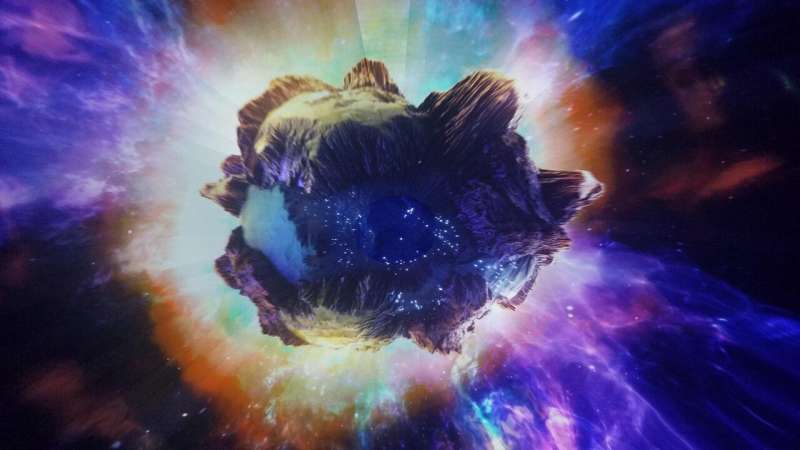Studies of carbon crystals formed as a result of asteroids colliding with the earth, scientists have come to the conclusion that they are not ordinary diamonds, but their splices with graphene. Researchers suggest using them in technology.

Asteroid collision creates crystals with unique structure
Scientists researching minerals formed about 50 thousand years ago when an asteroid collided with the Earth made an unexpected discovery. They investigated an iron meteorite from Diablo Canyon, which was discovered in 1891. As expected, a lot of formations were found in it, which can only form at extremely high temperature and pressure.
The attention of scientists was attracted by a mineral called Lonsdale. It was named after the crystallographer Kathleen Lonsdale and until now it was believed that it was an ordinary diamond with a hexagonal lattice. However, detailed crystallographic and spectroscopic studies have shown that this is not the case.
In fact, lonsdale is a fusion of diamond and graphene crystals called diaphites. Even more interesting is that the pattern of these compounds is imperfect. There are numerous irregularities in them, which give this material unusual spectroscopic and mechanical properties.
Research has allowed us to better understand what happens when meteorites collide with the Earth. The team learned that the distance between graphene layers in Lonsdale is unusual due to the surrounding of carbon atoms at the distribution boundary between graphene and diamond.
Not diamonds, but valuable crystals
Scientists are confident that they will now be able to detect diaphites using simple spectroscopy. They hope to find them in crystals that are much more widespread on Earth than Lonsdale. Potentially, they can be much more valuable than even diamonds.
Crystals with diaphites can be both ultra-hard and ductile. This is a very unusual combination, because most of the known solids materials are brittle, that is, they cannot deform due to complete destruction.
In addition, the electrical properties of crystals with diaphites can be controlled. They can be turned into both conductors and insulators. Thanks to this, they can be used in a wide range of new technologies: from abrasives and electronics to nanomedicine and laser technologies.
Follow us on Twitter to get the most interesting space news in time
https://twitter.com/ust_magazine
